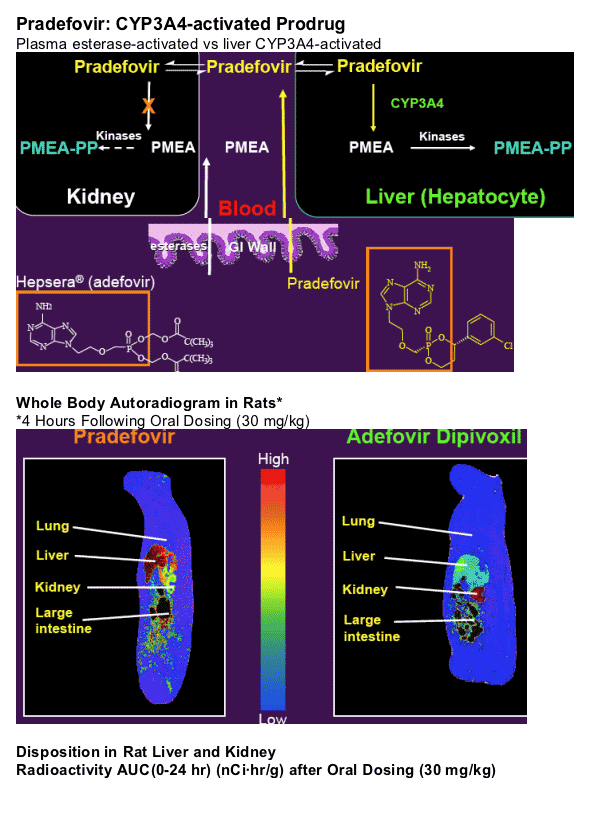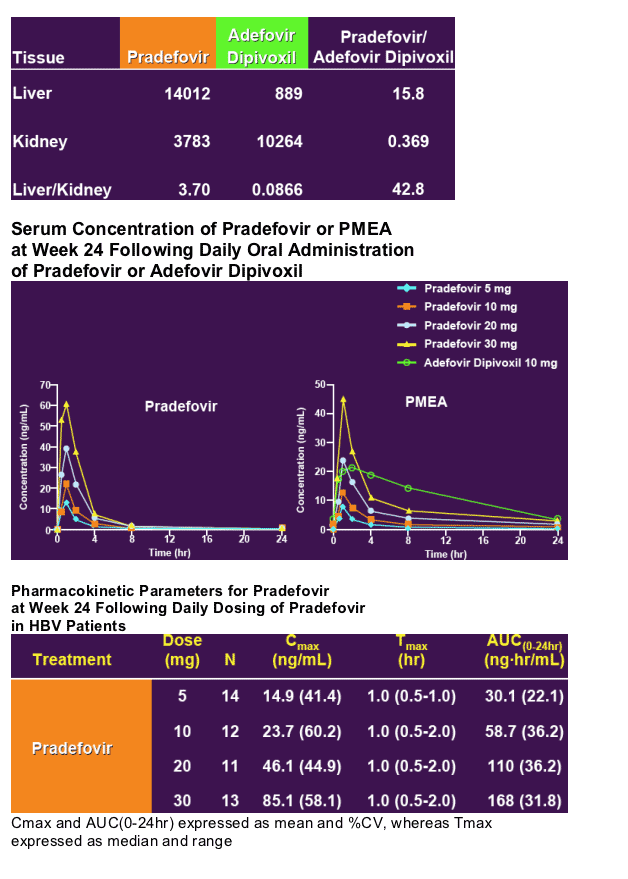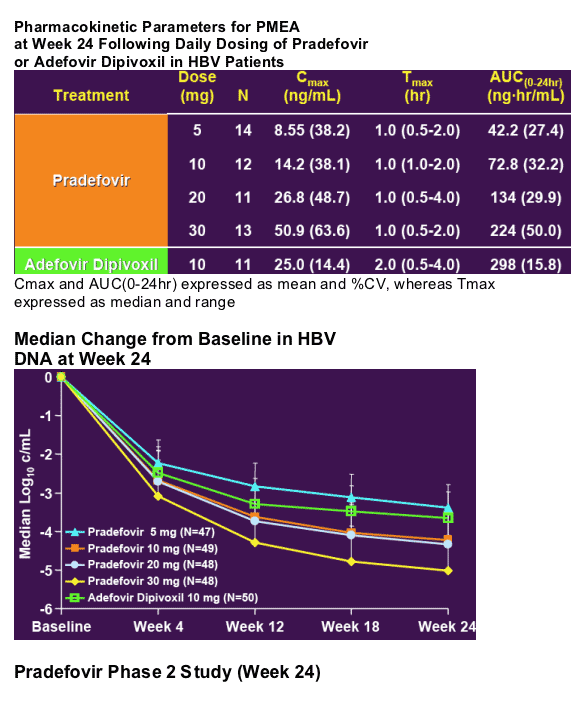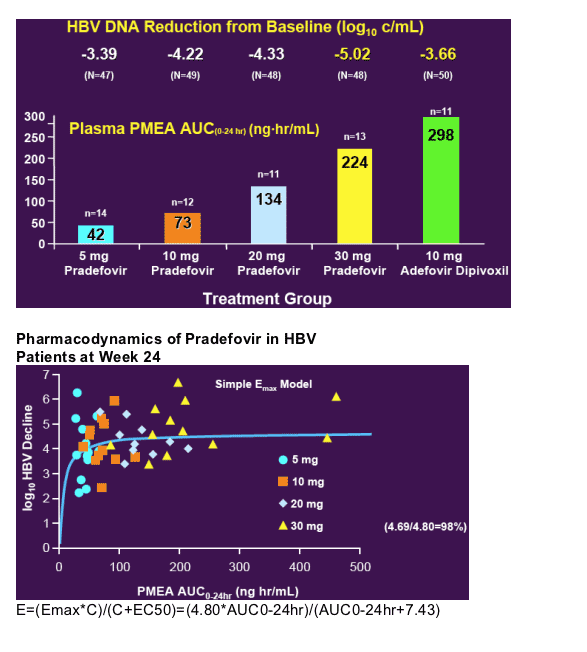 |
 |
 |
| |
Pharmacokinetics and Pharmacodynamics of Pradefovir Mesylate, a Liver-Targeting Pro-Drug of PMEA, in HBV Patients
|
| |
| |
Reported by Jules Levin
EASL, April 2006, Vienna, Austria
Chin-chung Lin, Christine Xu, Li-Tain Yeh, John Sullivan-Bolyai, and Yi Xu.
Valeant Pharmaceuticals International Costa Mesa, California, USA
Pradefovir (PDV) is a liver-targeted prodrug of PMEA with potentially improved
efficacy and less nephrotoxicity than adefovir dipivoxil (ADV).
Study Aim: To evaluate the pharmacokinetics and pharmacodynamics
of pradefovir mesylate in hepatitis B virus (HBV) patients
METHODS
Two hundred forty-two adult Asian patients with compensated HBV infection participated in this study.
All patients had an HBV DNA viral load > 5 x 105 copies/mL (500,000) at screening.
Forty-seven to fifty patients were randomized to each dose group of pradefovir (5, 10, 20, and 30 mg daily) or adefovir dipivoxil (10 mg) and were dosed for 48 weeks
Serum samples from 61 patients were analyzed for pradefovir and/or PMEA by LC-MS/MS methods.
Pre-dose serum HBV DNA levels in all patients on Day 1 and at Week 24 were determined using the COBAS Amplicor Assay (LOQ: 169 copies/mL).
A simple Emax model was used to evaluate the relationship between log HBV decline and PMEA AUC.
Author Conclusions
Pradefovir was rapidly absorbed in HBV patients and rapidly converted into PMEA.
30 mg pradefovir yielded less PMEA AUC than 10 mg adefovir dipivoxil after 24 weeks of treatment.
30 mg pradefovir yielded larger median declines in log10 HBV than 10 mg adefovir dipivoxil.
30 mg pradefovir produced 98% of Emax of log10 HBV declines.




|
| |
|
 |
 |
|
|